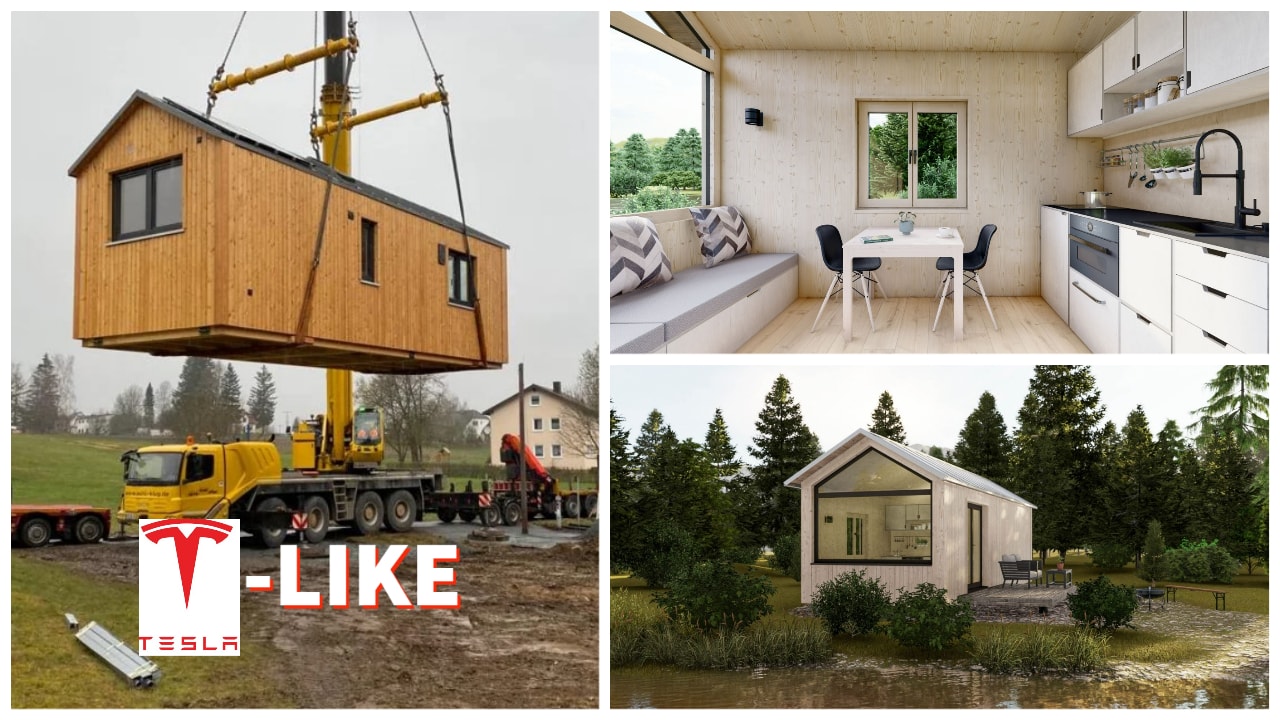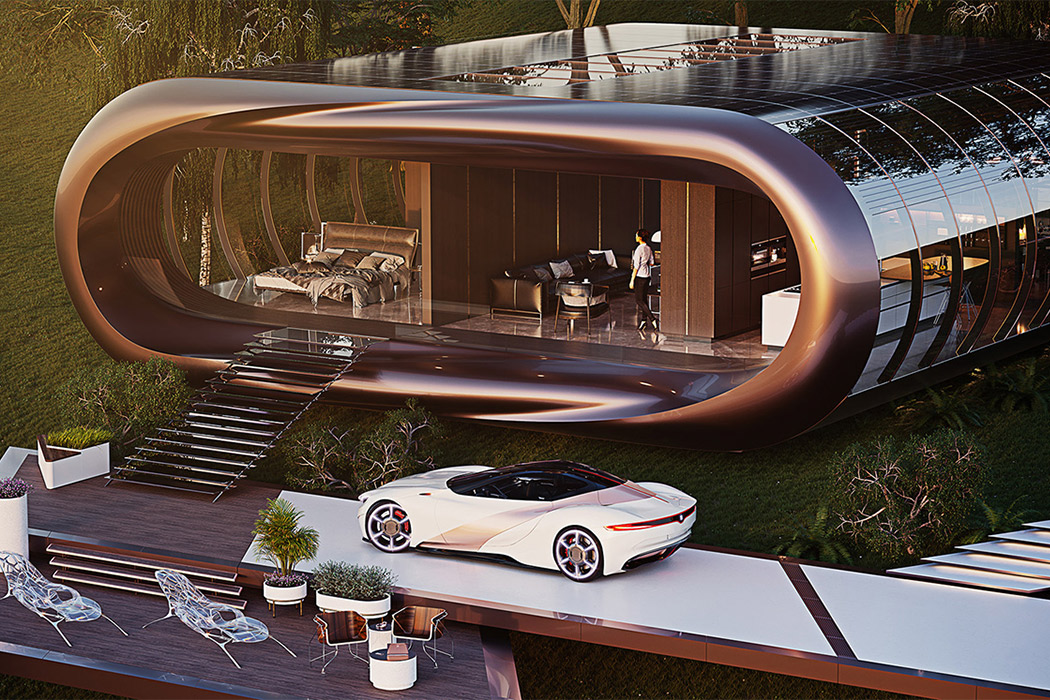Tesla Homes With Next-Gen Technology House Fire Reported After Heavy Rain
Tesla Homes With Next-Gen Technology House Fire Reported After Heavy Rain
Blog Article
Tesla Homes With Innovative Energy Solutions Newly Released $10,000 Tiny House
The way ahead for tiny home architecture is an intriguing blend of sustainability, innovation, and practicality. Many people are more and more recognizing the benefits of residing in smaller spaces, leading to a rising movement targeted on tiny homes. These constructions not only supply a simplified lifestyle but in addition a more environmentally acutely aware way of life.
Tiny homes symbolize a departure from traditional architectural designs, emphasizing minimalism and multifunctionality. The structure of those homes is usually cleverly designed to maximise area while offering essential facilities. Expect to see even more inventive options, like foldable furnishings and expandable residing areas, as architects innovate to fulfill the needs of their clients.
Tesla Smart Homes With Energy-Saving Technology Fully Furnished House Available For Purchase
Sustainability plays a pivotal role in the means ahead for tiny home architecture. By utilizing eco-friendly supplies and energy-efficient applied sciences, these homes can considerably scale back their carbon footprint. Solar panels, rainwater collection methods, and sustainable building supplies are only a few examples of how future designs will prioritize environmental duty.
Technological developments will further revolutionize tiny home architecture. Smart home technology is changing into increasingly accessible, which implies more tiny homes will incorporate options like automated lighting, sensible thermostats, and security methods. These innovations not only improve comfort but also allow homeowners to handle their resources extra efficiently.
The design philosophy of tiny homes emphasizes an efficient use of house, which might lead to a discount in construction prices. As extra individuals search affordable housing choices, tiny homes offer a compelling answer. The compact nature of those residences means they can usually be built on smaller plots of land, making housing more accessible in city settings.
Community-oriented designs are anticipated to gain traction in the tiny home motion. Cohousing arrangements and tiny home villages are emerging as viable alternate options to traditional neighborhoods. These communities not only foster a way of belonging but also encourage shared resources, which may result in extra sustainable living practices.
Tesla Homes With Zero Emissions Catching Fire In Flooded Garage
Regulatory modifications are also anticipated within the tiny home market. As local governments acknowledge the advantages of tiny homes, more municipalities could amend zoning laws to accommodate these constructions. This shift might enhance opportunities for tiny home dwellers and assist address housing shortages in numerous areas.
While aesthetics have always been important in architecture, the future of tiny home design will likely see an emphasis on individuality. Homeowners are in search of methods to express their unique identities, resulting in a various array of styles and finishes. Expect to see extra customized touches, from artistic facades to interior decor that showcases personal pursuits.
The psychological benefits of tiny residing are becoming more acknowledged. Smaller areas can promote mindfulness and simplicity, encouraging occupants to appreciate what they've. This life-style shift can lead to reduced stress levels and an general sense of well-being, making it an interesting option for many.

Future tiny homes may additionally impact city planning. They can provide options for the affordable housing crisis while sustaining a small footprint. Integrating tiny homes into existing neighborhoods might revitalize underused areas and provide new dwelling choices without significantly altering the panorama.
Tesla Smart Homes With Advanced Technology House Fire Reported After Heavy Rain
Moreover, the adaptability of tiny homes makes them suitable for varied climates and environments. Designs can be personalized to resist extreme climate situations or to harmonize with local cultural aesthetics. This flexibility will enable tiny homes to thrive in diverse settings, from urban facilities to rural landscapes.
The mental shift in the course of minimalism aligned with tiny home residing might encourage younger generations to prioritize experiences over possessions. This development may alter consumer conduct, resulting in a more sustainable strategy to residing that values quality over quantity. Future tiny home architecture will probably replicate this ethos, emphasizing thoughtful design and intentional dwelling.
As the tiny home motion continues to evolve, collaboration amongst architects, engineers, and sustainability experts will turn out to be essential. Their combined efforts will lead to revolutionary options that handle the unique challenges of tiny home dwelling. By leveraging experience from a number of fields, the longer term designs will probably be extra efficient and more harmonious with nature.
In conclusion, the future of tiny home architecture seems promising and multifaceted. It highlights a transformative shift toward sustainability, neighborhood, and individuality. As this motion gains momentum, expect to see an growing number of revolutionary designs that challenge standard norms and redefine what it means to reside small.
Tesla Tiny Homes With Renewable Energy Museum Dedicated To Inventor's Legacy
- Emphasis on sustainability will lead to the combination of eco-friendly materials, similar to reclaimed wooden and bamboo, inside tiny home designs.
- Advances in modular construction methods will allow quicker assembly and customization, permitting owners to create unique spaces tailor-made to their wants.
- Smart home technology will turn out to be a staple in tiny homes, optimizing power use and enhancing overall comfort through related gadgets.
- Urban areas might even see an increase in tiny home communities, promoting social interactions and a way of belonging amongst residents with related life.
- Innovative storage options might be essential, using vertical space and multi-functional furniture to maximize dwelling areas without sacrificing consolation.
- Off-grid capabilities will acquire popularity, with tiny homes increasingly featuring solar panels and rainwater collection methods for self-sufficiency.
- Designs will doubtless prioritize optimum airflow and pure lighting, integrating massive home windows and open ground plans to create a way of house regardless of smaller footprints.
- Accessibility in tiny home architecture might be prioritized, accommodating various wants and making these areas inclusive for all people.
- Innovations in 3D printing expertise might revolutionize the development of tiny homes, permitting for fast prototyping and cost-effective constructing options.
- The future might even see regulatory shifts that facilitate zoning for tiny homes, making them a viable inexpensive housing possibility in city settings.undefinedWhat are the advantages of tiny home architecture for sustainable living?
Tiny home architecture promotes sustainability by minimizing useful resource consumption and land use. With smaller footprints, these homes typically use energy-efficient supplies and designs, decreasing general energy consumption and promoting eco-friendly lifestyles.
How will tiny homes affect zoning legal guidelines within the future?
Tesla Homes For Smart Living House That Comes With A Battery

As the popularity of tiny homes grows, many local governments are reconsidering zoning legal guidelines to accommodate these constructions. Future rules may evolve to allow more flexible zoning that helps tiny home communities, recognizing their worth in addressing housing Full Report shortages (Tesla Homes With Innovative Solar Roofs).
What improvements are emerging in tiny home design?
Innovations embrace modular designs, good home know-how, and multifunctional furniture that maximizes area efficiency. Designers are more and more incorporating renewable power options, similar to solar panels, to enhance sustainability and self-sufficiency in tiny homes.
How can tiny homes contribute to neighborhood development?
Tesla Homes For Off-Grid Living Video Shows Fire During Flooding Conditions
Tiny homes can foster community by creating close-knit neighborhoods and different living preparations. They can present inexpensive housing options and assist shared assets amongst residents, resulting in stronger communal ties and collaborative residing experiences.
What position does technology play in tiny home architecture?
Tesla Homes With Energy Storage Possible Cause Of House Fire Under Investigation
Technology performs a big function in tiny home architecture through the combination of sensible home functionalities, energy administration systems, and advanced constructing materials. These improvements optimize area and enhance the residing experience, making tiny homes extra adaptable and user-friendly.
Will tiny homes be an answer to housing affordability crises?
Tesla Smart Homes For The Future Upcoming Plans For New Battery Systems
Tiny homes current a viable solution to housing affordability crises by providing lower-cost options to traditional housing. Their smaller dimension reduces building and maintenance costs, making them extra accessible for these struggling to search out affordable housing choices.
How can people finance tiny home projects?
Options for financing tiny home projects include personal loans, tiny home-specific mortgages, and crowdfunding. Additionally, some native governments supply grants or incentives for sustainable housing, making it easier for people to invest in tiny home builds.
What environmental impression do tiny homes have compared to conventional homes?
Tesla Homes Powered By The Sun Museum Dedicated To Inventor's Legacy
Tiny homes typically have a lower environmental impact than traditional homes as a end result of their lowered material utilization, smaller vitality wants, and potential for renewable vitality integration. They promote a minimalist life-style that encourages reduced consumption and waste.
What are the challenges of living in a tiny home?
(Tesla Homes For Sustainable Living)
Challenges include house limitations, zoning restrictions, and potential storage issues. Residents may must adapt their life to prioritize simplicity and minimalism, which could be tough however ultimately results in a extra intentional way of living.
Tesla Homes With Innovative Energy Solutions New Luxury Entertaining House With Pool
Can tiny homes be customized?
Tesla Homes For Clean Energy Living.
Yes, many tiny homes are customizable to fit particular person preferences and wishes. Builders often supply a spread of design look at here now options, permitting owners to select layouts, finishes, and features that align with their way of life while maximizing effectivity.
Report this page